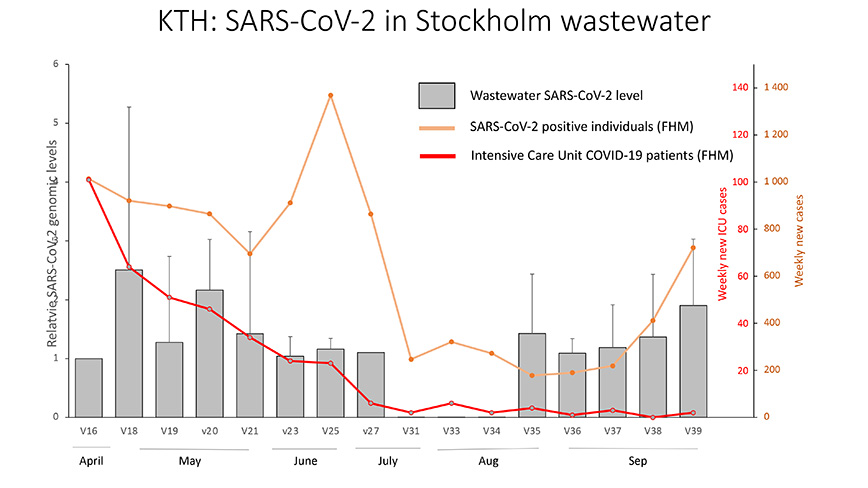Sewage analysis shows sharp increase in COVID 19 virus in Stockholm
The coronavirus is spreading again in Stockholm and surrounding suburbs, according to COVID 19 RNA measurements in local sewage, which are being conducted at KTH Royal Institute of Technology.

The level of coronavirus RNA detected in Stockholm's wastewater is returning to levels not seen in the Swedish capital since May.
The research team at KTH has been collecting and analyzing weekly samples from wastewater treatment plans in Stockholm since April. KTH is providing preliminary results from the weekly sewage analysis as an early warning system to flag resurging infections – before those who have been infected can be tested.
“The data from August and September shows that it’s not just a matter of more testing (0f individuals), it’s actually because there’s more virus in the population,” says researcher Zeynep Cetecioglu Gurol, a microbiologist and wastewater engineer at KTH.

“We are certain that there is more virus circulating in the population now,” says Cecilia Williams, KTH professor at SciLifeLab. She says the research team expects to publish its methodology for detection and analysis in the coming weeks.
Samples have been taken from three regional wastewater treatment plants since April, when the initial outbreak began in Stockholm. After concentration, filtering and preparation, the samples have been analysed using qPCR technique for genetic material (RNA) belonging to the virus SARS-CoV-2, which is known to cause the COVID-19 pandemic.
The results are an important addition to the records of infection testing and intensive care admissions which, taken together, gives an improved understanding of the regional dynamics of the pandemic, says David Nilsson, associate professor and director of the Water Centre KTH.
Cetecioglu-Gurol emphasizes that the current study is based on preliminary information that is evaluated continuously, with many aspects left to analyze.
“We only need to test a handful of samples per week to get information about the development,” she says. “Traces of the virus can disappear from the nose and throat relatively quickly, while the virus is excreted in wastewater for a longer period of time.”
Nilsson says that the research project has been in contact with local hospitals, which view the early warning indicators as crucial for preparation.
The Water Centre at KTH has published a research summary on its website.
David Callahan/Katarina Ahlfort
